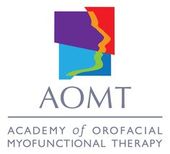Welcome to
The Bridge Myofunctional Therapy
The Bridge is here to help you attain the ultimate success with your or your child’s Orofacial Myofunctional journey. We currently offer Myofunctional Therapy, breathing re-education, and sleep/stress/recovery coaching for ages six and up.
Hours
In-person and Virtual Visits by Appointment
Closed Wednesday and Sunday
Service area
San Francisco Bay Area
Contact
thebridgemyo@gmail.com
2485 Clay Street
Suite 105
San Francisco, CA 94115
What is Orofacial Myofunctional Therapy?
Orofacial Myofunctional Therapy (OMT), is also referred to as Orofacial Myology, or in short-Myofunctional Therapy. It is a non-invasive, exercise-based approach that is used to help reprogram incorrect muscle function patterns that have developed in breathing, chewing, and swallowing. Many years ago, it was called “Tongue Thrust Therapy”, but that term is now a bit myopic and outdated as it is much more than that.
Think of it as having a personal trainer for the muscles of the mouth, face, and tongue.
It helps to strengthen and train the soft tissues and muscles to function as nature intended.
It is used to help correct detrimental oral habits like thumb-sucking and nail biting.
Many Orofacial Myofunctional Disorders (OMDs), such as mouth breathing, tongue thrusting, teeth clenching, and low tongue posture can be also treated with Myofunctional Therapy.
Without correction of these issues, OMDs can interfere with proper growth, development, and function of the orofacial structures and can negatively impact one’s overall health and wellbeing.
Myofunctional Therapy is also used in certain phases of orthodontic treatment, jaw surgery, sleep apnea treatment, and tongue or lip-tie surgeries.
The therapy is tailored to each client’s individual needs, usually takes just about 15 minutes per day, and can actually be fun!
The Four Primary Goals of Myofunctional Therapy Are:
I.
Nasal Breathing
Breathing through both nostrils at all times, day and night.
II.
Proper Tongue Posture
The tongue should nestle against the entire palate, not in the floor of the mouth
III.
Correct Swallowing Pattern
The tongue should not “thrust” forward with swallowing, nor should any of the facial & neck muscles be used to compensate.
IV.
Lip Seal
Lips should remain closed except for speaking, singing, and eating/drinking.
These goals may seem easy to achieve and you may say “I’m not a mouth breather!”, or “I don’t walk around with my mouth open”. Most people are completely unaware of how much they actually do it until they pay attention to it.
Once you notice an OMD, it is hard to “un-see”, and it’s more common than you think. Just take a look next time you are watching television-----you will probably see one or more of the actors with their mouths open.
When each of these four goals are met, results can be positively life-changing for the overall health and wellbeing of the client.
Myofunctional Therapy works best when there is a multidisciplinary approach and collaboration with other healthcare professionals, because a team approach is the best approach. These professionals may include Physicians, Dentists, Orthodontists, Otolaryngologists (ENTs), Allergists, Occupational Therapists, Osteopaths, Lactation and Feeding Consultants, Physical Therapists, Speech-Language Pathologists, Bodyworkers (massage therapy, acupuncture, etc), and many more. Each individual is unique and may need to see just one or several of these other providers to reach their goals.
Hence the name “The Bridge”. We are here to bridge the gap between different care providers and clients, and in awareness and treatment of OMDs.
Our mantra:
Tongue Up, Lips Closed, Breathe Through Your Nose.












